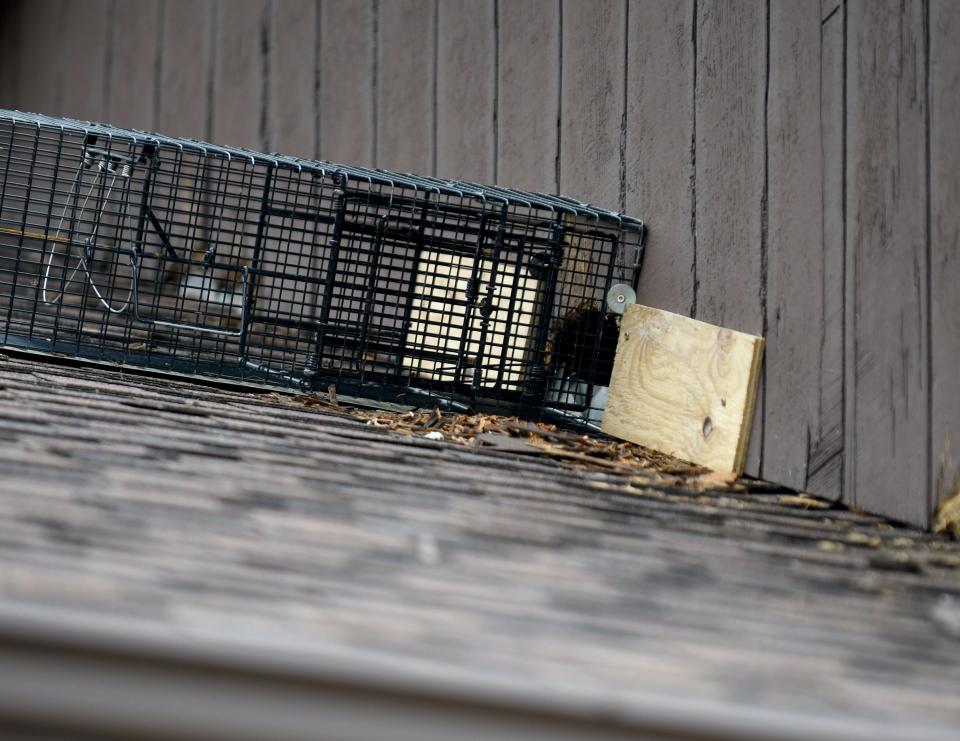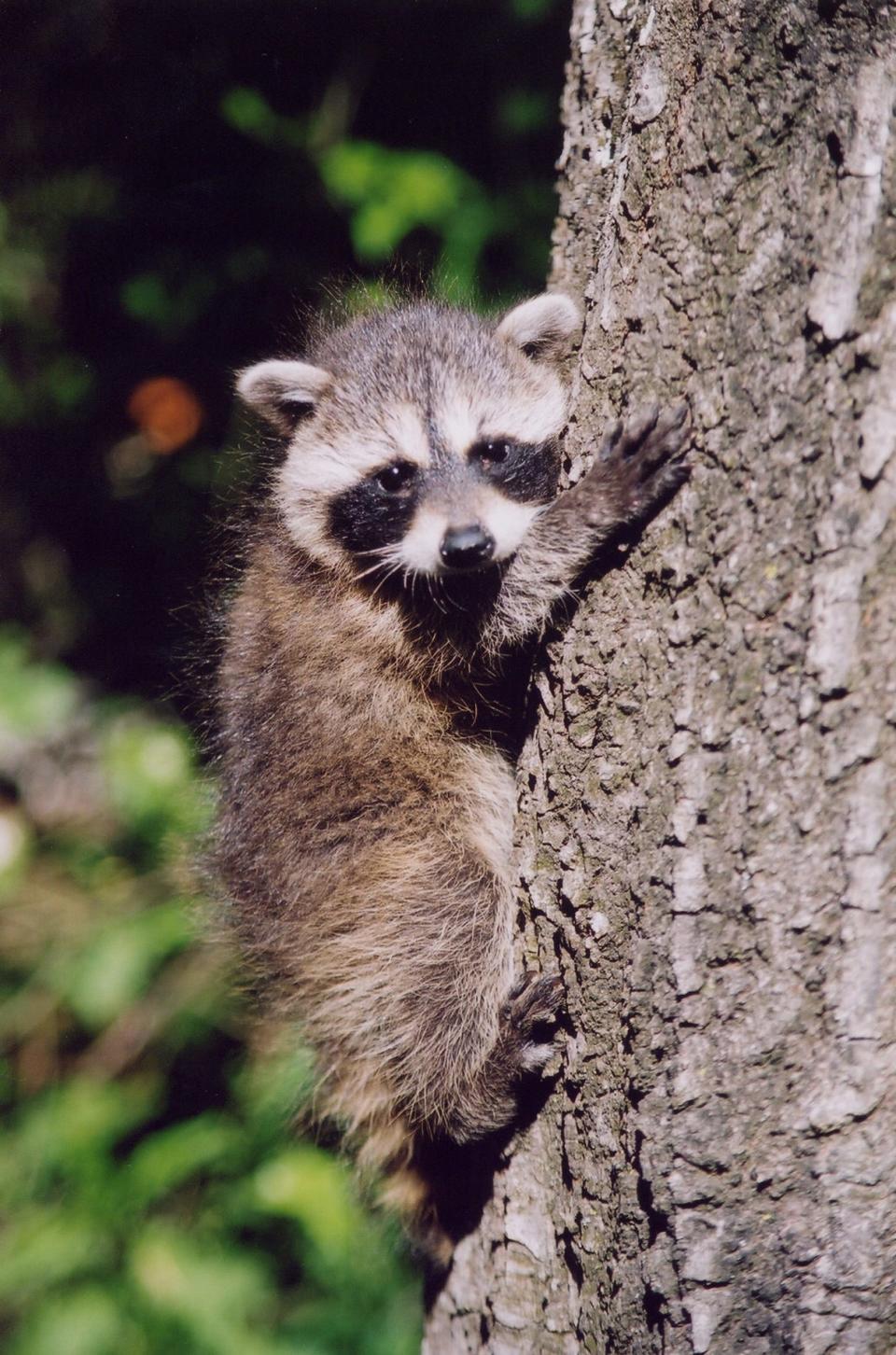Don't let backyard critters win. Here's how to curb raccoon and squirrel damage

NORTH CANTON – It was late in the night and Desiree Givens' 13-year-old heard unusual noises outside.
"It sounded like a bat caught in the garage," Givens said.
They heard more noises but found only chewing and claw marks and a hole on the side of their house.
Raccoon attacks: A woman was attacked by a raccoon while hanging Christmas lights. She put it in a headlock.
Squirrel prop: A photographer is on a mission to bring joy to the world
They called a pest control company but it would be another night of chewing and clawing before a trap could be set.
In the end, the culprit got away, leaving behind a mess for Givens and her family.
"We're pretty positive it was a raccoon," she said.
Raccoons – and other backyard critters – are known to turn houses into nail salons and maternity rooms, creating problems for homeowners.
How can a homeowner deter these creatures from their property?

'It becomes a part of their habitat.'
While raccoons and squirrels attack houses for a numbers of reasons, it is definitely not to provoke a battle with humans.
Laurie Brown, a research technician for the Ohio Department of Natural Resources' Division of Wildlife, said the critters gnaw on the edges of houses to sharpen their teeth; scratch to improve their nails; and chew to open holes to stay warm or have babies.
"It is something they are used to and it is their routine to visit those locations," Brown said. "It becomes a part of their habitat."
The same issues, as well as digging holes and tunnels, apply to groundhogs and skunks. They can create instability in a structure's foundation, Brown said.
Critter damage can be costly
It can cost between $150 and $5,000 to remove an unwanted animal and make repairs.
Some, but not all insurance policies, cover damage caused by a backyard critter. But the damage must be unforeseen and unavoidable.
That "unforeseen and unavoidable" part is key for any claim, said Scott Holeman, media director of Insurance Information Institute.
He said if a home was already in need of repairs and the owner ignored them, no policy would cover damage from a critter that gains access.
Holeman added that any coverage would likely be limited to structural or electrical needs, not personal property.
In other words, no policy covers a raccoon or squirrel tearing into a couch or bed.
Holeman also said any costs to remove the critter would come out of pocket.
For the Givens family, they paid $350 to set up a trap and the raccoon caused an estimated $3,500 to $4,500 in damage. Fortunately, their insurance policy will cover most of the repair costs.
How to repel these five homewreckers
Here's how you can repel critters from filleting your home before extraction is necessary.

Raccoons

 Yahoo Autos
Yahoo Autos 